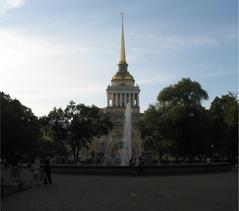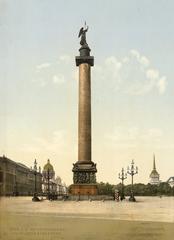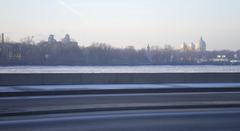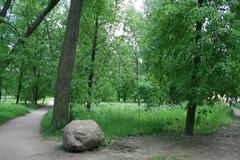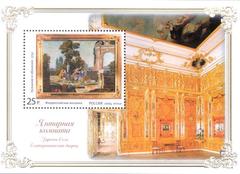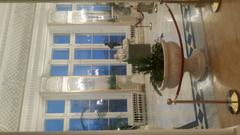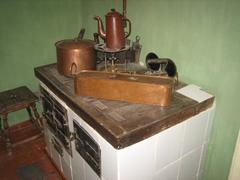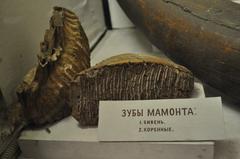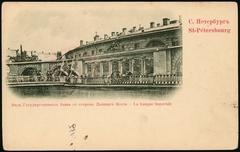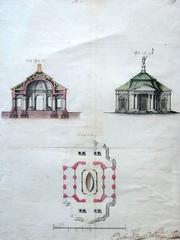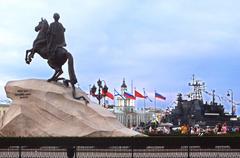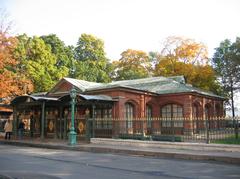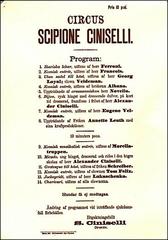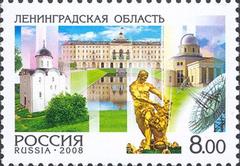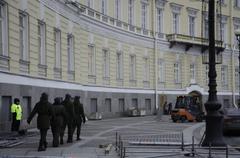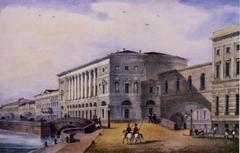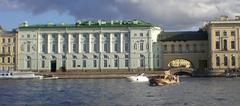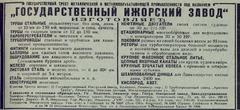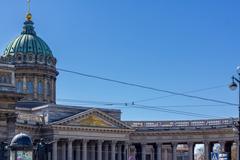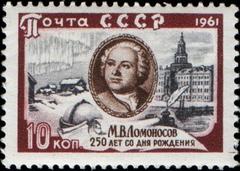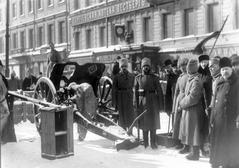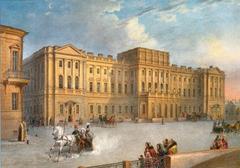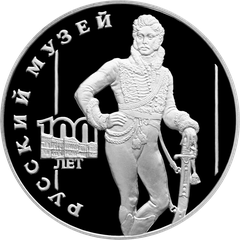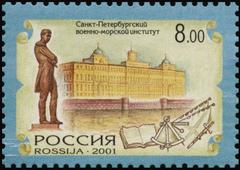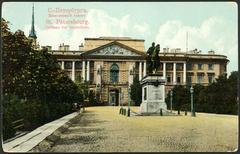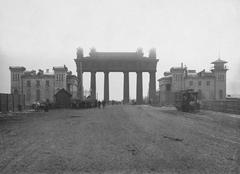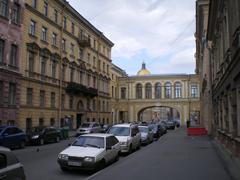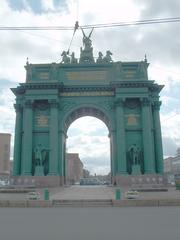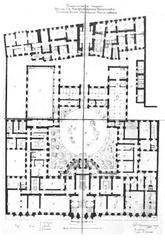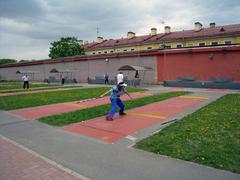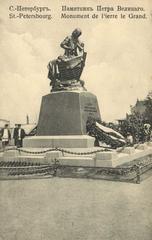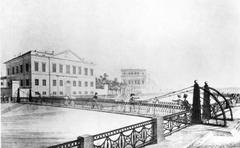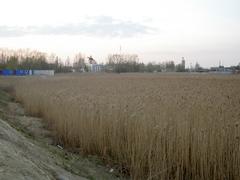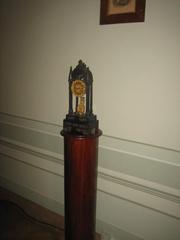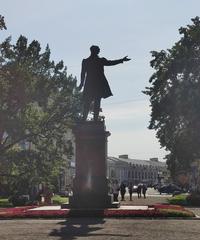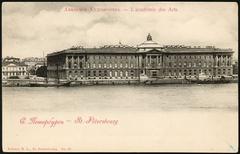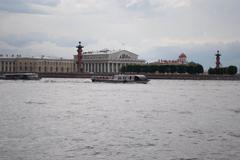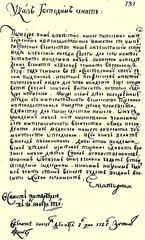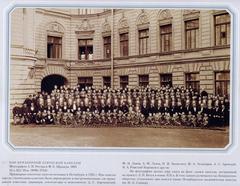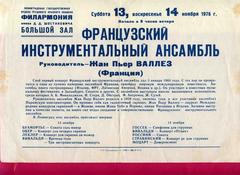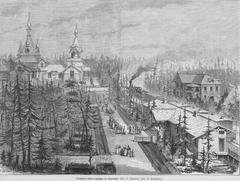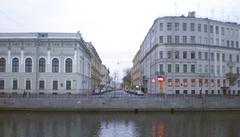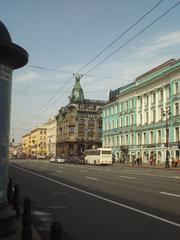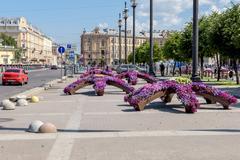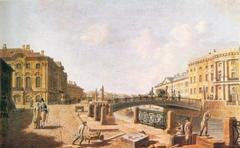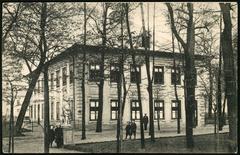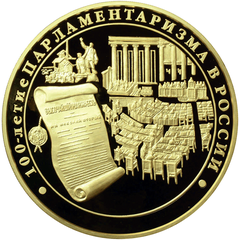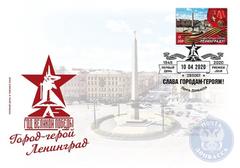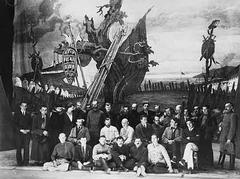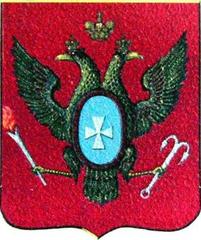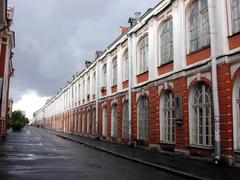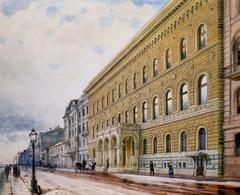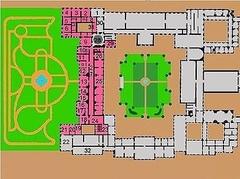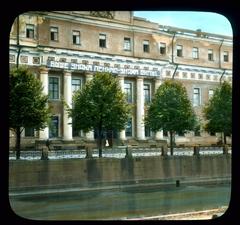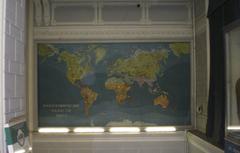
Fort Alexander I: Visiting Hours, Tickets, and Historical Significance in Saint Petersburg
Date: 04/07/2025
Introduction
Fort Alexander I—often called the “Plague Fort”—is a striking historical monument set on an artificial island in the Gulf of Finland near Saint Petersburg, Russia. Built between 1838 and 1845 as part of the Kronstadt fortress network, the fort’s robust granite and brick construction showcases the ingenuity of 19th-century military engineering. Beyond its original military purpose, Fort Alexander I earned international renown at the turn of the 20th century as one of the world’s first bacteriological laboratories, where pioneering research on the plague bacterium contributed to global advances in public health. Today, the fort’s evocative ruins and layered history draw visitors seeking insight into Russia’s military and scientific past. This comprehensive guide provides essential information on Fort Alexander I’s history, visiting hours, ticketing, accessibility, practical travel tips, and nearby attractions, ensuring you get the most out of your visit to one of Saint Petersburg’s most intriguing sites (Atlas Obscura, Live Science).
Table of Contents
- Introduction
- Historical and Architectural Overview
- Military Role and Transition to Science
- Visiting Fort Alexander I
- Nearby Attractions
- Conservation and Responsible Tourism
- Frequently Asked Questions (FAQ)
- Conclusion
- References
Historical and Architectural Overview
Strategic Origins and Construction
Fort Alexander I was commissioned in the 1830s to strengthen Saint Petersburg’s maritime defenses as part of the Kronstadt fortress system. Situated at coordinates 59.9895°N, 29.7178°E, the fort was strategically positioned to guard the southern approaches to the imperial capital. Its artificial island foundation was an engineering feat: over 5,500 wooden piles were sunk into the seabed and topped with sand, concrete, and granite to support the massive superstructure (Atlas Obscura).
Architectural Features
Measuring approximately 90 by 60 meters, the fort features a distinctive oval-shaped, casemated design rising four stories above the water. The three-story granite structure, with walls up to 2 meters thick, originally housed 103 cannon embrasures, additional rooftop artillery, and facilities for up to 1,000 soldiers. Notable features include a central courtyard, spiral cast-iron staircases, and decorative gates reflecting 19th-century imperial grandeur. The earth-and-vegetation-covered roof provided both camouflage and protection.
Military Role and Transition to Science
Military Significance
Although Fort Alexander I never saw direct combat, it served as a formidable deterrent during conflicts such as the Crimean War. Along with other nearby forts, it protected the vital naval base of Kronstadt and the city of Saint Petersburg from Baltic Sea threats. By the late 19th century, advances in naval artillery rendered the fort less critical for active defense (Live Science).
Plague Laboratory and Scientific Achievements
In 1897, the Russian government converted the fort into a bacteriological laboratory to study Yersinia pestis, the bacterium responsible for plague. Its isolated location made it ideal for high-risk research. This laboratory became a global leader in infectious disease research, confirming the plague’s bacterial origins, developing vaccines, and establishing quarantine protocols that influenced international public health standards. The site’s legacy endures in the design of modern biosafety labs and in global disease containment practices (Live Science).
Visiting Fort Alexander I
Visiting Hours and Tickets
- Seasonal Access: The fort is open to visitors primarily from May to September, with typical visiting hours from 10:00 AM to 6:00 PM. Exact times vary by tour operator.
- Tickets: Ticket prices generally range from 1,000 to 3,000 Russian rubles per person, depending on the tour package. Advance online booking through authorized tour operators or at official departure points is strongly recommended, as there are no on-site ticket offices.
Getting There
- Boat Access Only: The fort is accessible exclusively by boat from Saint Petersburg or Kronstadt. Most tours include round-trip transportation.
- Departure Points: Tours depart from Saint Petersburg’s harbor or the Kronstadt pier. Private charters are available for groups with prior arrangement.
On-site Experience and Accessibility
- Exploring the Fort: Visitors can expect a self-guided or guided exploration of the fort’s atmospheric interiors—vaulted corridors, cannon ports, and remnants of laboratory spaces. Many surfaces are uneven or damp; sturdy footwear is advised.
- Facilities: There are no restrooms, cafes, or shops on-site. Bring water, snacks, and necessary personal items.
- Accessibility: The fort is not wheelchair accessible and presents significant challenges for visitors with mobility impairments due to narrow passages, stairs, and rough terrain.
Guided Tours and Special Events
- Guided Tours: Highly recommended for safety and context, guided tours provide in-depth interpretation of the fort’s military and scientific history, often including access to the rooftop and former laboratory areas.
- Special Events: Occasionally, the fort hosts historical reenactments, photography workshops, or cultural festivals, especially in summer. Check with tour operators for event schedules.
Travel Tips
- Clothing: Wear layers and waterproof shoes; interiors can be chilly and damp.
- Equipment: Bring a flashlight for dark corridors, a camera for panoramic views, and a charged phone (though coverage may be spotty).
- Booking: Secure tickets early for summer visits, as tours can fill up quickly.
- Safety: Follow guide instructions, avoid unsupervised exploration, and watch for slippery or unstable surfaces.
Nearby Attractions
While planning your visit to Fort Alexander I, consider exploring:
- Kronstadt Naval Base: Rich in maritime history, home to the Naval Cathedral of Saint Nicholas.
- Peter and Paul Fortress: The original citadel of Saint Petersburg, located in the city center.
- Saint Petersburg Landmarks: Hermitage Museum, historic city center, and other renowned cultural sites.
Conservation and Responsible Tourism
Decades of neglect and exposure have left Fort Alexander I in a fragile state. While some preservation work has begun, official restoration remains limited. Visitors play a vital role in conservation: avoid disturbing artifacts, refrain from graffiti or littering, and follow all safety guidelines. Responsible tourism helps ensure the fort’s survival for future generations (Atlas Obscura).
Frequently Asked Questions (FAQ)
What are the opening hours of Fort Alexander I?
Open for tours from May to September, usually 10:00 AM to 6:00 PM. Check with your chosen tour operator for specific schedules.
How can I buy tickets?
Tickets are sold online through authorized tour operators or at departure points in Saint Petersburg and Kronstadt. Advance purchase is recommended.
Is the fort wheelchair accessible?
No, accessibility is very limited due to the historic structure and terrain.
Are guided tours available?
Yes, and they are highly recommended for both safety and educational value.
Can I visit Fort Alexander I in winter?
Visits during winter are rare due to harsh conditions; access is only possible with experienced guides.
Are there facilities like restrooms or cafes on the fort?
No, visitors must bring their own supplies as there are no amenities on the island.
Conclusion
Fort Alexander I is a testament to Russia’s military prowess and scientific innovation—a unique blend of fortress and laboratory set against the dramatic backdrop of the Gulf of Finland. Its atmospheric ruins, panoramic views, and fascinating stories provide a memorable experience for history enthusiasts, architecture buffs, and adventurous travelers alike. To fully enjoy your visit, plan ahead, book a guided tour, and prepare for a rugged but rewarding adventure. Responsible tourism and ongoing preservation efforts are crucial to safeguarding this extraordinary site for years to come.
For the latest tour updates, ticket information, and travel tips, consult the official Saint Petersburg tourism website and download the Audiala app. Explore related posts, follow us on social media, and discover more of Saint Petersburg’s historic marvels.






